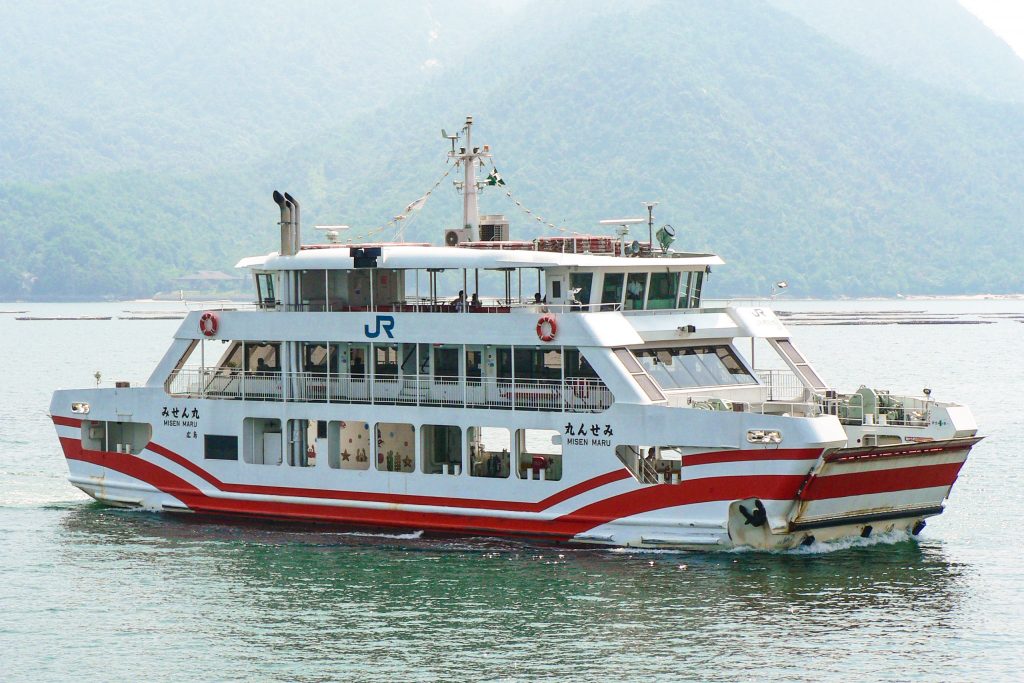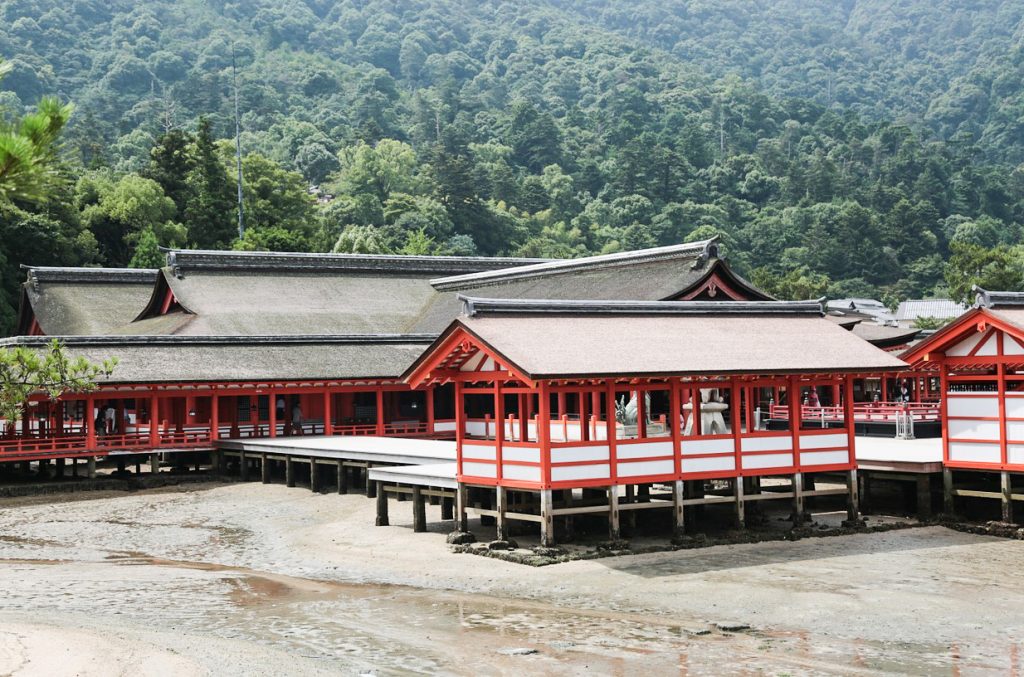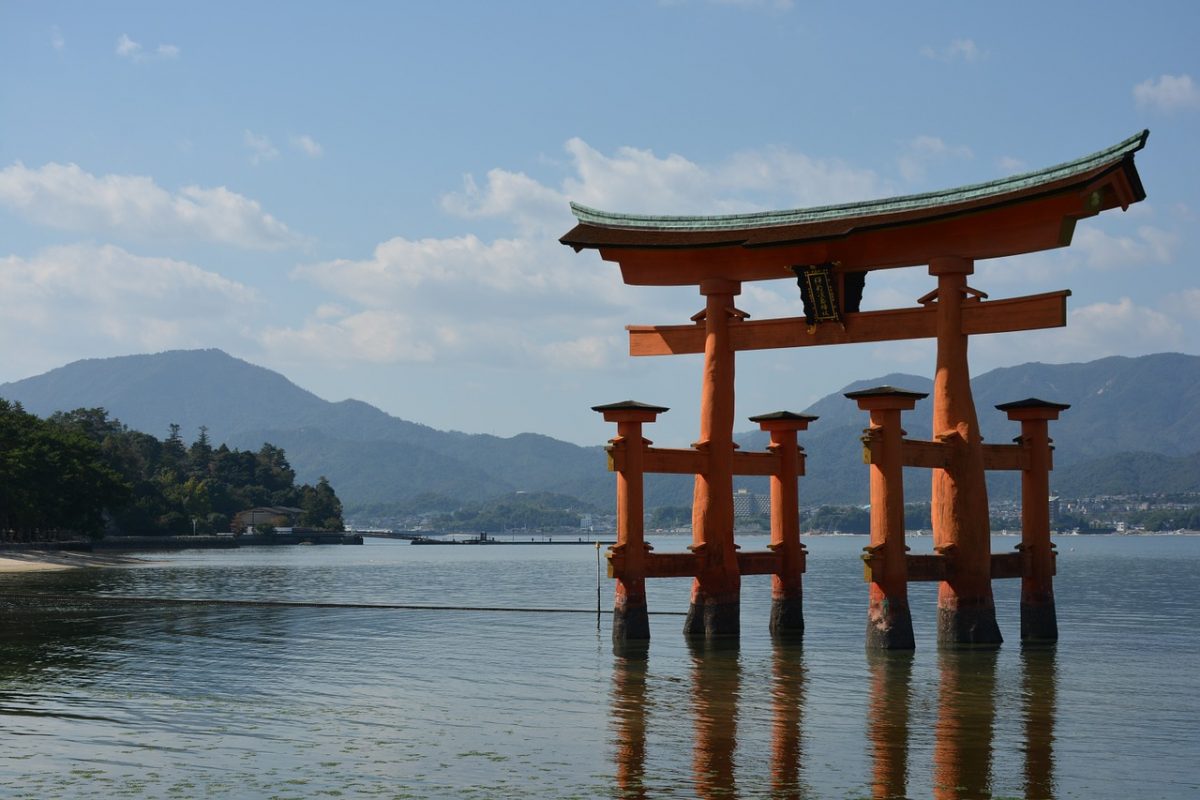Miyajima means “shrine island.” This small island has been a sacred place of worship since ancient times, where the gods were thought to live in harmony with mortal man.
The Itsukushima Shrine and its Torii Gate have been declared a UNESCO World Heritage Site, and have been celebrated as one of the Three Views of Japan since 1643.
Miyajima Island is located in the Seto Inland Sea off the coast of Japan. It is part of the Setonaikai National Park, which comprises areas of the Inland Sea and of then bordering prefectures.
Hiroshima is the nearest major city, and the island can be reached by chartered boat or ferry.
Table of Contents
How to get to Miyajima Island from Hiroshima
From Hiroshima Station, take the JR Sanyo Line to Miyajimaguchi Station, which takes around 20 minutes one-way and is included in your JR Pass.
Alternatively, from central Hiroshima, you can take a tram to the Miyajimaguchi ferry port. The ferry pier is only a short walk from the station.
The good news is that you can use your Japan Rail Pass to access the JR ferry for free.
The key details of the JR West Miyajima Ferry are:
- The ferry ride takes only about 10 minutes.
- Ferries depart every 15 minutes.
- Ferries depart from Miyajimaguchi from 6:25am to 22:42.
- Ferries return from Miyajima from 5:45am to 22:14.
Boats are also available departing from the Hiroshima Peace Park. These boat rides are not covered by the Japan Rail Pass and take approximately 45 minutes, with 17 round trips per day.

How to get to Miyajima from other major cities
To reach Miyajima from Tokyo, Kyoto, Osaka, and Fukuoka, you first have to make your way to Hiroshima.
You can take the Nozomi, Hikari, or Kodama trains down the Tokaido Shinkansen line from Tokyo and Kyoto to Shin-Osaka station.
From Osaka, you can ride the Sanyo Shinkansen all the way to Hiroshima Station.
If you’re traveling from Fukuoka, catch the Sanyo Shinkansen eastbound directly to Hiroshima.
Things to do in Miyajima
Most of Miyajima’s attractions are concentrated in the small town around Itsukushima Shrine, extending to Mount Misen. Those who enjoy traveling on foot will find this close proximity ideal.
Visit Itsukushima Shrine
This ancient Shinto shrine, constructed around 1168 C.E., is the center of activity on the island of Miyajima. This shrine is unique in that it is built over water. Each of the buildings — the main hall, the prayer hall, and the Noh theater — are supported by stilts and connected by boardwalks over the water.
The shrine is a mere 10 minute walk from the ferry terminal. Paths also lead from the shrine all around the inlet, and you can enjoy the sea views from these paths.

Enjoy the Floating Red Torii Gate at sunset
The word torii means “bird abode.” These gates are built at the entrance to a Shinto shrine to demarcate the transition from the ordinary to the sacred. The floating torii gate was built as the entrance to Itsukushima Shrine, the family shrine of Taira no Kiyomori.
At high tide, both the gate and the shrine appear to float on the water. This is the time that affords the best views and photo opportunities.
When the tides recede, visitors can walk to the gate on the exposed sea bed to view it up close.

The gate, as well as the shrine, is illuminated for a few hours after sunset each day. Boat cruises are available for nighttime viewing. At high tide, some cruises even take visitors through the torii gate.
Spin the Sutra Wheels at Daisho-in Temple
This historic site is one of the most sacred to Shingon Buddhism. The grounds house many buildings and halls, sacred statues, a tearoom, a cave of religious icons, and a sand mandala constructed by visiting Tibetan monks.
The Daisho-in Temple is about a 15- minute walk up-hill from the ferry pier.
Many visitors to the temple take part in a Buddhist ritual. The temple’s steps are lined with a row of metal wheels inscribed with sutra, or Buddhist scripture. Each wheel spins on a metal axis, and spinning the wheels is thought to bring the visitor the same blessings as reading the verses.

Hike up Mount Misen
This mountain is accessible only on foot or by cable car.
3 hiking trails are accessible from the town and converge at the mountain’s summit at 500 meters above sea level. These are known as the Momijidani Course, the Omoto Course, and the Daisho-in Course.
The Momijidani Course departs from Momijidani Park. This trail is both the shortest and steepest.
The Daisho-in Course is known for having the best scenic views, and it is less steep than the other trails. Each of the trails takes approximately 1.5 to 2 hours to complete, one-way.

For those desiring a ride up the mountain, the Miyajima Ropeway provides cable car access to and from three stations – Momijidani Station, Kayadani Station, and Shishi-iwa Station.
The cable car ride takes around 20 minutes and ends at the Shishi-iwa Observatory.
The mountain’s highest point is about a 1 kilometer from the observatory — just a 30-minute walk. This offers the best view of the surrounding inland sea and islands.
Cable car tickets cost between ¥1100 one-way and ¥2000 return for adults.
Surroundings
Monkeys and deer live on the mountain and have little fear of man, and a quiet walker can observe these animals at close proximity.
Mount Misen is especially popular during the fall (autumn) season, when its forest of maple trees is set ablaze by the vivid reds and golden hues of changing leaves.

There are several historic Buddhist temple structures located near the mountain’s summit, including the Misen Hondo and the Reikado, or Hall of the Spiritual Flame.
The flame housed there is said to have been lit by Kobo Daishi, founder of Shingon Buddhism, who lived from 774 to 835 C.E., and has been burning ever since. This flame was used to light the Hiroshima Peace Park’s Flame of Peace.
Momijidani Park
Visitors can also enjoy Momijidani Park, a green area at the foot of Mount Misen, near the valley. This park was designed during the Edo period, in which maple saplings trees were planted. These trees show their blossoms in spring, fresh air and green leaves in the summer, and beautiful autumnal colors in the fall.
Staying overnight on Miyajima
Hostels and guest houses are available in the town for overnight visitors. An extended stay will allow you to enjoy not only the attractions, but relaxing in the natural hot springs, called onsen, as well.
If you’re planning a trip to Japan, be sure to check out our other travel guides and itineraries. Visit the destinations category our article archives.
